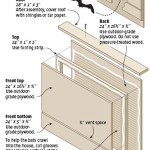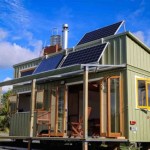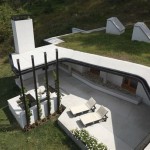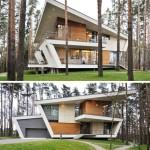Design Your Dream Home: House Plans for Pie-Shaped Lots
Designing a house for a pie-shaped lot presents unique challenges and opportunities. Unlike rectangular or square lots, pie-shaped properties, also known as fan-shaped or wedge-shaped lots, narrow toward the front and widen significantly toward the back. This geometry requires careful consideration of the building footprint, setbacks, and overall aesthetic appeal to maximize the usable space and create a functional and visually pleasing home. Successful pie-shaped lot house plans embrace the unconventional shape, transforming potential drawbacks into architectural advantages.
The key to designing effectively for a pie-shaped lot lies in understanding its specific constraints and leveraging its inherent benefits. The wider rear portion of the lot often allows for larger outdoor living spaces, expansive gardens, and the possibility of incorporating features like swimming pools or patios. However, the narrow front presents limitations for the facade and driveway placement. A well-thought-out design will balance these elements to create a harmonious and functional living environment.
Understanding Setbacks and Zoning Regulations
Before embarking on any design, it is imperative to thoroughly research and understand the local zoning regulations and setback requirements. Setbacks are the minimum distances a building must be from property lines, and they are crucial in determining the buildable area of a pie-shaped lot. These regulations often vary depending on the location of the property and the type of zoning district. Ignoring these regulations can lead to costly delays and modifications during the construction process.
Pie-shaped lots often pose unique challenges in meeting setback requirements, particularly along the angled side property lines. The convergence of these lines towards the front of the lot can significantly restrict the width of the front facade. Architects and designers must carefully consider these restrictions when planning the placement and orientation of the house on the lot. Some municipalities may offer variances for unusual lot shapes, allowing for some flexibility in setback requirements. It's advisable to consult with the local planning department early in the design process to determine the feasibility of the proposed plan.
Furthermore, zoning regulations may dictate specific requirements for building height, lot coverage, and impervious surface area. Lot coverage refers to the percentage of the lot that can be covered by buildings and other structures, while impervious surface area includes surfaces like driveways and patios that prevent water from seeping into the ground. Adhering to these regulations is essential for ensuring compliance and preventing potential environmental issues.
Optimizing the Floor Plan for a Pie-Shaped Lot
The floor plan is the heart of any house design, and its optimization is even more crucial for pie-shaped lots. The unconventional shape necessitates a thoughtful layout that maximizes the use of space and creates a comfortable and functional living environment. One common strategy is to orient the main living areas, such as the living room, dining room, and kitchen, towards the wider rear portion of the lot. This allows for larger, more open spaces with ample natural light and views of the backyard.
The narrower front portion of the lot can be used for less frequently used spaces, such as bedrooms, home offices, or the garage. Alternatively, the entry foyer and a formal living room can be placed at the front, creating a welcoming entrance while reserving the back for the main living areas. The orientation of the house on the lot should also consider the path of the sun to maximize natural light and minimize heat gain.
When designing the floor plan, it’s crucial to minimize wasted space and create a seamless flow between rooms. Angled walls and unconventional room shapes may be necessary to accommodate the pie-shaped lot, but these can also add character and architectural interest to the design. Consider incorporating built-in storage solutions to maximize space efficiency and minimize clutter. The design should also address potential privacy concerns, particularly along the angled side property lines. Strategically placed windows, landscaping, and fencing can help to create a sense of privacy and seclusion.
Circulation patterns play a significant role in the functionality of the house. Hallways should be wide enough to allow for comfortable passage and should be strategically located to minimize travel distances between rooms. Consider incorporating a central hallway or a circular layout to improve circulation and create a more open and inviting atmosphere. The placement of stairs should also be carefully considered, as they can take up a significant amount of space and can affect the overall flow of the house.
Exterior Design Considerations for Pie-Shaped Lots
The exterior design of a house on a pie-shaped lot requires careful consideration of the building's proportions, massing, and style. The narrow front facade presents a unique opportunity to create a striking and memorable entrance. Architects often use vertical elements, such as gables, dormers, or towers, to accentuate the height of the house and create a sense of grandeur. The use of contrasting materials and textures can also add visual interest and break up the monotony of a narrow facade.
The wider rear portion of the house allows for more expansive design elements, such as large windows, balconies, and patios. These features can help to visually connect the interior living spaces with the outdoor environment and create a seamless transition between the two. The architectural style of the house should be chosen to complement the surrounding neighborhood and the overall character of the lot. Traditional styles, such as Colonial or Craftsman, can be adapted to fit a pie-shaped lot, while more contemporary designs can embrace the unconventional shape with bold and innovative forms.
Landscaping plays a crucial role in enhancing the aesthetic appeal of a house on a pie-shaped lot. The use of trees, shrubs, and flowers can soften the edges of the building and create a sense of privacy and seclusion. A well-designed landscape can also help to guide the eye and create a sense of balance and harmony. Consider incorporating features such as pathways, patios, and water features to enhance the outdoor living experience.
The driveway and parking area should be carefully planned to maximize space and minimize disruption to the overall design. On a pie-shaped lot, it may be necessary to position the driveway along one of the angled side property lines. This requires careful consideration of the driveway's width, slope, and turning radius to ensure safe and convenient access. Consider using permeable paving materials to reduce stormwater runoff and minimize the impact on the environment. The garage can be integrated into the house design or detached and placed towards the rear of the lot. A detached garage can free up space on the front facade and create a more open and inviting entrance.
Furthermore, the roof design contributes significantly to the overall appearance of the house. A well-designed roof can add visual interest and enhance the architectural style of the building. Consider using multiple roof planes, dormers, and gables to create a more dynamic and interesting roofline. The choice of roofing materials can also affect the overall aesthetic appeal of the house. Consider using materials that complement the surrounding environment and the overall architectural style.
In summary, designing a dream home on a pie-shaped lot demands careful planning, innovative design solutions, and a thorough understanding of zoning regulations and site constraints. By leveraging the unique advantages of the lot and addressing its challenges creatively, it is possible to create a functional and visually stunning home that maximizes the use of space and enhances the living experience. The key lies in understanding the specific requirements of the lot and working with experienced professionals to develop a design that meets your needs and aspirations.

Altaira House Plan Custom Home Plans Sater Design Collection

Altaira House Plan Custom Home Plans Sater Design Collection

Wishlist House Plan Contemporary Plans Mediterranean Prairie Craftsman Shingle Style Traditional Homes Transitional Designs

House Plan 1028 Willow Creek Circle European

Wishlist House Plan Contemporary Plans Mediterranean Prairie Craftsman Shingle Style Traditional Homes Transitional Designs

Altaira House Plan Custom Home Plans Sater Design Collection

Making The Most Of A Small Lot

Altaira House Plan Custom Home Plans Sater Design Collection

Regatta House Plan Naples Florida Plans

Building A Home One Step Forward Ten Steps Back The Makerista
Related Posts








